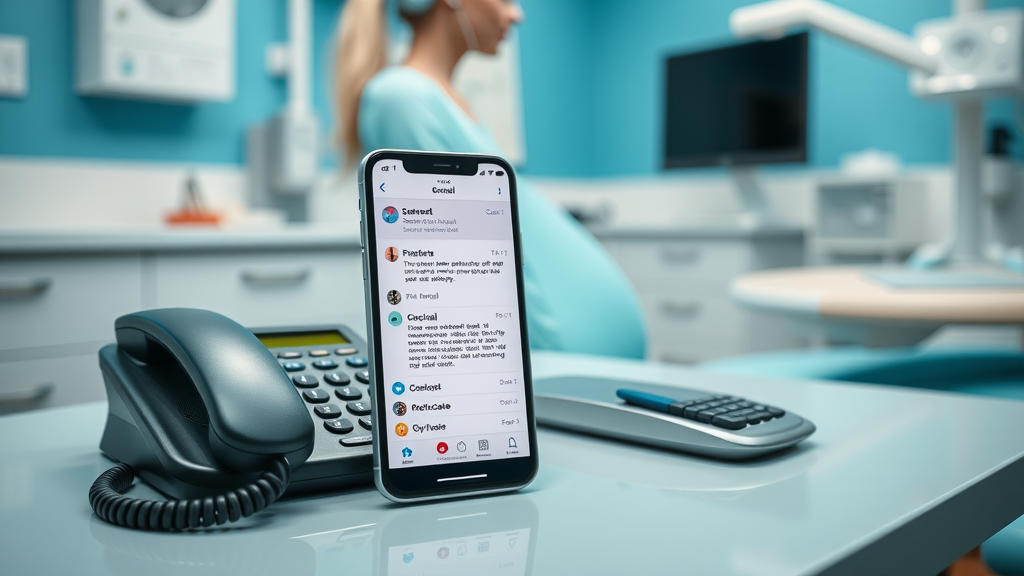Did you know 25% of all dental practice revenue is lost each year to inactive patients? For most dental practices, these dormant patient lists represent millions of dollars in untapped opportunities. Today, AI-powered automation can recapture this lost revenue with almost no manual effort—transforming not just your bottom line, but your team’s day-to-day workflow and your patients’ care.
If you want to reduce no-shows, fill your schedule, and deliver better oral health outcomes, it’s time to unlock the power of AI in dental patient reactivation. Here’s how top practices are crushing recovery rates and boosting revenue in 2025 and beyond.
AI Transformation in Dental Patient Reactivation: Real Statistics That Demand Your Attention
-
Startling truth: 25% of all dental practice revenue is lost each year to inactive patients. Discover how AI-driven patient reactivation campaigns can reclaim this revenue effortlessly.
"Every year, millions of dollars are left on the table by dental practices overlooking inactive patients. AI is redefining reactivation strategy for the next decade."

What is Dental Patient Reactivation and Why Does It Matter?
-
Definition and core objectives of dental patient reactivation
-
Common challenges in reaching inactive patients
-
Impact on dental practice growth and revenue
Dental patient reactivation refers to strategies and actions a dental practice takes to engage and bring back patients who haven’t scheduled or attended appointments for a certain period—often six months or more. The main goal of any reactivation program is to convert inactive or dormant patients back into active patients , thereby improving the flow of patients, ensuring continuity of care, and boosting practice income.
Reaching inactive patients isn't as easy as making a single phone call or sending a mass email. People change phone numbers, lose touch with their dental care routine, or simply don't respond to generic outreach. These communication barriers, along with changing patient expectations and data privacy challenges, make manual reactivation efforts time-consuming and often ineffective.
However, effectively reactivating dormant patients pays off significantly . Not only does it secure immediate revenue from dental treatment plans and preventive visits, but it also strengthens patient loyalty—making it more likely that patients refer friends and family. Practices that excel at patient reactivation see stronger growth and more predictable schedules, while improving their community’s overall oral health .
How AI is Transforming Reactivation Campaigns
-
Personalized messaging for high patient engagement
-
Unlocking active patient and inactive patient insights at scale
-
AI-driven automation vs. manual reactivation programs
Artificial intelligence (AI) has revolutionized patient reactivation by enabling ultra-personalized outreach at a scale that manual methods can’t match. AI analyzes patient data—such as appointment histories, treatment plans, demographics, and communication preferences—to deliver custom-tailored outreach through text, email, phone calls, and even social media messaging. This level of personalization sparks higher engagement and vastly improves reactivation rates compared to generic email blasts or staff-generated phone call lists.
Unlike manual reactivation efforts that rely on team member availability and often only scratch the surface of your inactive patient base, AI-driven automation continuously evaluates your active patient and inactive patient lists. It identifies high-priority patients, predicts who’s most likely to return, and sequences communications for the best conversion—freeing up staff from endless reminder calls and repetitive tasks.
The shift from old-school reactivation programs to AI-powered reactivation campaigns means dental practices can now reclaim lost revenue while reducing overhead and delivering a seamless, patient-friendly experience. As a result, AI doesn't just revive patients—it transforms your entire reactivation strategy .
Unlocking the Power of AI-Driven Dental Patient Reactivation Campaigns
-
Why traditional phone call and email follow-ups are inefficient
-
AI reactivation program: automated workflows and segmentation
-
Case studies: Increased reactivation rates and revived dental practices
Traditional reactivation methods—like manual phone calls and generic email reminders—strain staff resources and return low response rates. For example, team members might only reach a fraction of lost patients, given the time constraints and other front-desk priorities. Often, communication attempts arrive at the wrong time or through the wrong channel, leading to low engagement. This outdated approach can even put additional pressure on your office manager and marketing budget, all for limited returns.
In contrast, an AI reactivation program deploys automated workflows that segment patients based on inactivity window, treatment needs, or previous engagement. AI customizes both the timing and the message for each contact—ensuring patients are prompted to act when they’re most likely to respond. Dental practices that have transitioned to AI-powered campaigns consistently report a substantial increase in reactivated appointments and patient retention, without a proportional increase in workload.
Real-world results further amplify the benefits. For instance, one multi-location dental group reactivated over 300 dormant patients in three months using AI-powered segmentation and outreach—generating tens of thousands of dollars in previously lost revenue and revitalizing their appointment book.
|
|
|
Comparison of Traditional vs. AI-Powered Patient Reactivation Campaigns |
|
Metric |
Traditional Methods |
AI-Powered Campaigns |
|---|---|---|
|
Speed |
Manual, slow (weeks/months to reach entire list) |
Automated, fast (entire list engaged within days) |
|
Success Rate |
Low (10-20% on average) |
High (30-50%+ reactivation rate) |
|
Resource Usage |
High (significant staff time and cost) |
Low (minimal staff intervention, scalable) |
|
ROI |
Low/moderate |
High (2x-10x investment return) |
Key Components of a Successful Dental Patient Reactivation Strategy

Identifying and Segmenting Inactive Patients with AI
-
Data analytics for targeting inactive patient populations
-
Custom segmentation for personalized reactivation
The cornerstone of any effective dental patient reactivation strategy is the precise identification and segmentation of inactive patients . AI leverages advanced data analytics to comb through lists, uncovering patterns in patient visit frequency, outstanding treatment needs, and communication preferences. By using historical attendance, uncompleted treatment plans, or even targeted time windows (e.g., patients not seen in 12+ months), practices can zero in on who to contact—and when.
Custom AI-powered segmentation enables highly personalized outreach. Instead of treating all dormant patients the same, AI can split your audience into actionable segments—such as lapsed hygiene patients, overdue treatment cases, or those needing specific oral health follow-up. This increases the relevance of every message and boosts the probability of a positive response.
Best of all, these insights are delivered instantly, allowing your team to focus reactive efforts where they’ll have the highest impact and automate communications for the rest.
AI-Enhanced Multi-Channel Communication for Patient Reactivation
-
Automated text, email, and phone call reminders
-
Integrating social media and instant messaging
-
Boosting response rates in dental practices
Comprehensive outreach in modern dental practices requires more than just phone calls or emails. With AI-enhanced automated communication, a practice can schedule waves of reminders through SMS, tailored emails, and even automated (but friendly) voice calls, each crafted for maximum patient engagement .
Advanced systems now integrate instant messaging apps and social media—meeting patients on the platforms they use every day and making it as easy as possible to book an appointment. Each channel delivers personalized content, optimized for the device and time of day, turning once-inactive patients into active participants in their dental care journey.
The result is a dramatic lift in response and appointment booking rates. AI-driven platforms monitor engagement in real time—automatically following up on unread messages or missed calls—so patients don’t fall through the cracks and your team is freed up for high-value tasks.
Measuring Success: Key Metrics for Dental Patient Reactivation Campaigns
-
Reactivation rates and patient retention statistics
-
ROI of AI reactivation campaigns
To optimize your reactivation campaign , robust measurement is key. Most AI platforms furnish real-time tracking on key performance indicators like the percentage of inactive patients converted to active patients , average response time, patient retention, and campaign ROI.
Practices that track these metrics can rapidly identify which outreach sequences or channels out-perform others, adapt their reactivation strategy proactively, and ensure no opportunity for reengagement goes unnoticed.
"Practices leveraging AI-powered reactivation programs have reported an average 30% increase in returning active patients within six months." — Industry Analyst
Designing an AI-Based Dental Patient Reactivation Program for Your Practice
-
Step-by-step process: from choosing technology to launching a pilot reactivation campaign
-
Best practices for seamless integration with practice management systems
-
Common pitfalls and how to avoid them
Building your own AI-based reactivation program starts with assessing technology needs and choosing a reputable automation platform compatible with your practice management software. After importing and cleaning your patient database, use AI tools to segment your inactive patient list and customize communication workflows. Launch a pilot reactivation campaign with a sample cohort and monitor results closely.
Smooth integration requires close coordination between your dental team, office manager, and IT support. Ensure your platform syncs appointment calendars, automates reminder scheduling, and records patient responses directly within your practice management dashboard. Always test your outreach content and timing on a small group before a full rollout.
Avoid pitfalls like sending duplicate messages, using impersonal content, or neglecting GDPR/HIPAA data compliance. Consistent monitoring and a willingness to adjust your approach will lead to greater success and sustained improvement over time.
Engagement Tools and Incentives: Gift Cards and Beyond
Increasing Response with Gift Card Incentives
-
Data on appointment conversions using gift cards
-
Creative incentive ideas beyond gift cards
Gift card incentives are a powerful motivator for engaging dormant or inactive patients . Practices that provide a $25-$50 gift card upon completion of a checkup or dental treatment have reported reactivation rates jump by as much as 40%. These offers are especially compelling for families or patients overdue for recall visits, often tipping the balance in favor of booking that long-delayed appointment.
Beyond gift cards, creative incentives include complimentary teeth whitening , discounted preventive services, or even dental care kits for children—each aligned with your patients’ needs and interests. AI can help identify which incentives are most effective for each segment, improving ROI on your campaigns and delighting patients in the process.

Ethical Considerations in Reactivation Campaigns
-
Compliance with regulations and patient trust
-
Transparency in offering incentives
It’s vital to structure reactivation incentives ethically and transparently, ensuring compliance with local regulations, ADA guidance, and patient privacy mandates. Always clearly communicate the terms of any gift card or incentive—avoid disguising offers or creating misleading expectations.
Maintaining transparency strengthens patient trust, enhances your practice’s reputation, and safeguards you from regulatory risk. Patients appreciate honesty and are more likely to become loyal, active patients when incentives are paired with genuine recommendations for better oral health .
Benefits and ROI of Dental Patient Reactivation Automation
-
Immediate revenue recovery and practice growth
-
Enhanced active patient base and patient loyalty
-
Time and cost savings for dental practices
Implementing automated reactivation campaigns delivers instant and measurable returns for dental practices. Immediate revenue is recovered from overdue appointments and treatment plans, while the pool of active patients expands—fueling future referrals and greater schedule stability.
Practices experience notable time and cost savings as staff spend less effort on manual reminder calls and greater focus on patient-facing care. Over several months, these improvements compound, supporting the growth of your dental practice and delivering superior patient engagement.
ROI projections consistently show that a smart AI-powered reactivation program generates 2x to 10x its cost in recovered revenue, especially when tailored to larger practices or those with high inactivity rates.
|
|
|
|
|
Projected ROI from Automated Reactivation Programs (by Practice Size & Inactivity Rate) |
|
Practice Size |
Inactive Patients |
Reactivation Rate |
Recovered Revenue (Estimate) |
ROI |
|---|---|---|---|---|
|
Solo |
500 |
30% |
$45,000 |
3x |
|
Mid-size |
3,000 |
35% |
$315,000 |
21x |
|
Multi-location |
8,000 |
40% |
$960,000 |
35x+ |
Practical Examples: Successful Dental Patient Reactivation in Real Practices
-
Case example: Solo practice increases active patients by 50% in 4 months with AI
-
Multi-location dental practice streamlines reactivation campaigns and saves staff 20 hours weekly
-
Patient reactivation program success stories from the field
Still skeptical? Consider these real-world success stories. A solo practitioner in a competitive dental market used an AI-powered patient reactivation solution targeting patients who’d missed appointments in the last year. Within four months, they reactivated over 300 former patients—a 50% increase in their active patient roster—resulting in booked preventive visits, new treatment plans, and a cascade of referrals.
In another case, a multi-location group saved 20 hours of staff time per week by switching from manual phone calls to automated, multi-channel outreach. Their AI platform’s insights improved segmentation and follow-up, greatly reducing missed opportunities and boosting both appointment volume and patient satisfaction.
These outcomes aren’t isolated—they’re replicated across all types of dental practices nationwide, as more teams embrace automation to build stronger, more resilient practices.

Future Trends: AI, Automation, and the Next Generation of Dental Patient Reactivation
-
Predictive analytics for reactivation strategy
-
Emerging channels and patient engagement tools
-
How evolving AI tech will shape dental patient reactivation
The next era in dental patient reactivation will be driven by predictive analytics . Sophisticated algorithms will soon forecast exactly which inactive patients are most likely to respond to a specific channel, incentive, or timing—optimizing every reactivation campaign for maximum ROI.
As new communication tools emerge—from secure messaging platforms to telehealth consults—AI will coordinate patient engagement across them all, ensuring patients receive the right message, at the right time, in their preferred format. These advances will further humanize automation, letting practices deliver personalized, timely care that feels less like a marketing push and more like a helpful nudge.
Dental practices investing in smart automation today are positioning themselves at the forefront of this patient-centric evolution, reaping the benefits of an active, loyal patient base for years to come.
Common Challenges in Dental Patient Reactivation and How AI Solves Them
-
Overcoming inactive patient communication barriers
-
Reducing staff workload with automation
-
Resolving compliance and data privacy concerns
Manual reactivation efforts are plagued by communication barriers such as outdated phone numbers , low email open rates, and unread voicemails. AI overcomes these by persistently updating contact data, intelligently sequencing messages, and shifting to the channels that patients are most likely to use.
Automation dramatically cuts the staff workload required for dental patient reactivation. Instead of assigning a team member or office manager to spend hours calling or emailing—with little to show for it—AI executes thousands of touchpoints behind the scenes, so the team can focus on patient care.
Moreover, the best reactivation platforms are built to meet HIPAA and GDPR standards for patient privacy. They offer end-to-end encryption and audit trails to ensure your practice remains compliant while delivering modern, patient-friendly communications.
Actions Dental Practices Can Take Today to Improve Patient Reactivation
-
Audit your inactive patients lists
-
Evaluate current reactivation strategies
-
Explore AI automation platforms for patient reactivation campaign implementation
-
Incorporate incentives like gift cards to prompt return visits
-
Establish regular tracking for reactivation metrics
Start small: Begin by assessing your current inactive patient list, reviewing the effectiveness of your reminder processes, and exploring AI systems that streamline your outreach. A unified, data-driven approach paired with the right incentives can dramatically transform how quickly and reliably you bring active patients back onto the calendar.
The practices that act now will be the ones leading their markets in growth, retention, and patient satisfaction a year from today.
Exploring Multi-Touch Reactivation Campaigns for Maximum Dental Patient Engagement
Sequencing Outreach: Phone Calls, SMS, Email, & Social
-
Crafting personalized messages for each channel
-
Maximizing touchpoints for greater conversion
The most effective reactivation campaigns combine multiple outreach modes: personalized SMS, compelling emails, friendly phone calls, and even social media messages. AI orchestrates the timing and sequencing—so if a patient ignores an email, a gentle text later in the week might prompt action. Each message is tailored with details relevant to that recipient, from specific recall needs or past-due treatments, to friendly offers for gift card incentives .
The key to maximizing conversion is not just repetition, but variety and personalization. A multi-touch campaign ensures that your practice’s message stays front-of-mind, while analytics enable you to shift resources toward the channels producing the best results.

Role of Practice Management Software in Dental Patient Reactivation
-
Customizing workflows in modern practice management systems
-
Integrating AI for effortless reactivation campaigns
Modern practice management systems now seamlessly integrate AI-powered reactivation workflows—allowing easy scheduling, automatic note-keeping, and two-way messaging all within a single dashboard. These platforms enable staff to view active patient status at a glance, coordinate multi-channel outreach with one click, and record campaign results directly to the patient’s digital chart.
The result: no more juggling third-party lists, spreadsheets, or missed follow-ups. Integration of reactivation tools maximizes productivity and ensures that no patient falls off your radar.
Building a Team Culture Focused on Dental Patient Reactivation
-
Training staff for AI-assisted patient reactivation strategy
-
Motivating teams with data-driven wins
Team training is foundational for a thriving reactivation strategy. Your dental professionals and front-office staff must understand both the technology and the communication approaches used in today’s automated campaigns.
Regular sharing of data-driven wins—like monthly increases in active patients or ROI on recent campaigns—keeps morale high and motivates further adoption of these advanced approaches. A culture unified around patient engagement and continuous improvement ensures ongoing success.
The Patient Experience: Personalized Care Throughout the Reactivation Journey
-
How patient reactivation improves oral health outcomes
-
Humanizing automation: Keeping patient care at the center
When managed well, dental patient reactivation ensures dormant patients return for needed preventive care, screenings, and follow-ups—dramatically improving both their oral and overall health. Every nudge reconnects patients with their care team, builds trust, and strengthens loyalty.
Humanizing automation is critical. Personal, compassionate messaging, clear explanations of the benefits, and timely reminders make patients feel cared for—not marketed to. Practices that succeed keep patient relationships at the core of every technology-driven outreach.
"The best results come when AI elevates the human touch, not replaces it, in dental patient engagement." — Dental Technology Leader

Case Study: A Dental Practice’s 90-Day Patient Reactivation Turnaround
-
Initial challenges and patient inactivity rates
-
Deployment of AI reactivation campaigns
-
Outcomes: surge in active patient numbers and ROI increase
In early 2024, a mid-sized dental practice observed patient inactivity rates exceeding 25%—hundreds of overdue patients and abandoned treatment plans. Their manual reactivation processes—primarily batches of phone calls and emails—were falling short, and the front-office staff were overwhelmed.
After launching a targeted AI-driven reactivation campaign , they used custom segmentation and multi-channel messaging. Within 90 days, appointment bookings surged, over 200 once-dormant individuals returned, and net-new treatment revenue climbed by $60,000. Staff time spent on manual reminders dropped by more than half, and the office manager reported a renewed sense of energy and optimism throughout the team.
Metrics to Watch: Evaluating Success of Your Dental Patient Reactivation Program
-
Active patient growth
-
Reactivation program engagement rates
-
Tracking ROI and patient satisfaction
Focus on the following as leading indicators of reactivation program success: total active patient count (before and after campaigns), response/appointment rates to specific channels, and total revenue attributed to reactivated patients. Robust practices also regularly survey reactivated patients for feedback, refining their approach for ever-better engagement and retention.
Frequently Asked Questions about Dental Patient Reactivation
-
What defines an inactive patient in dental practices? An inactive patient is generally defined as anyone who has not booked or attended a dental appointment in 12 months or longer. Some practices use shorter windows, like six months, depending on their patient recall frequency.
-
Can AI reactivate patients who haven’t visited in years? Yes. AI can identify and prioritize even long-lost patients, tailoring outreach and utilizing incentives to boost re-engagement, regardless of how much time has passed since their last visit.
-
Is automated dental patient reactivation GDPR/HIPAA compliant? Modern AI platforms are built to comply with all applicable regulations. Data privacy, encrypted communications, and secured consent are standard features in reputable solutions.
-
How quickly do dental patient reactivation campaigns show results? Most practices start to see increased appointment bookings and reactivations within a few weeks of launching an AI-powered campaign, with ongoing improvement as the program is refined.
-
What are best practices for offering incentives like gift cards? Ensure incentives are transparent, compliant with legal/ethical guidelines, and clearly communicated. Pair rewards with valuable care—like checkups or preventive treatments—to drive real patient benefit.
People Also Ask
How does AI improve dental patient reactivation rates?
-
AI leverages large volumes of data to identify inactive patients quickly, personalize outreach, automate reminders, and select the most effective channels for each demographic, leading to higher response and reactivation rates.
What are the best incentives for dental patient reactivation campaigns?
-
Gift cards are highly effective, but combining incentives with professional care tips or discounted services can generate even greater patient engagement.
Which practice management tools support automated reactivation campaigns?
-
Modern practice management software platforms often offer AI modules or integration with third-party automation tools designed specifically for dental patient reactivation.
Ready to See Results? Take the First Step to Automated Dental Patient Reactivation
-
If you're curious how other practices are reactivating hundreds of patients without lifting a finger, we're happy to show you—no strings attached.
-
Book a demo and experience the transformation for your own dental practice.
Conclusion
Take the first step: assess your inactive patient list and implement AI-powered reactivation campaigns—your path to happier patients, fuller schedules, and thriving practice growth starts right now.
 Add Row
Add Row  Add
Add 




Write A Comment